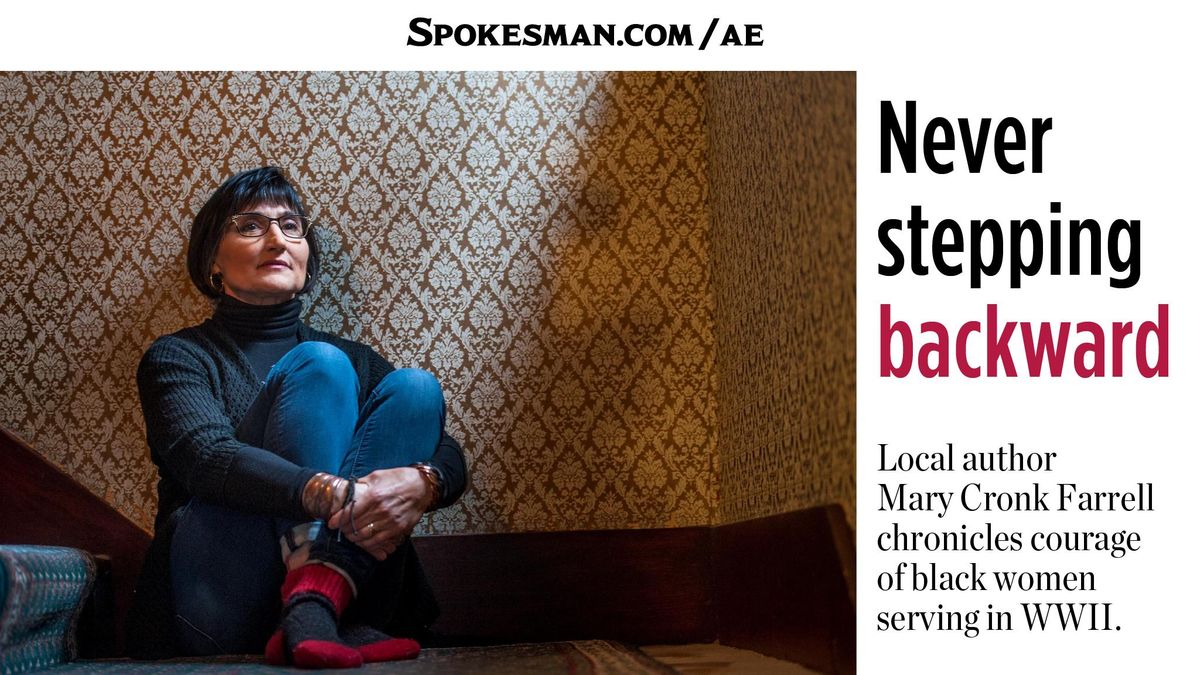Local author Mary Cronk Farrell chronicles challenges, courage of black women serving in WWII in new book

While researching one project, authors often find compelling ideas for another book. That’s what happened to Mary Cronk Farrell.
When delving into the history of women in the military for “Pure Grit: How American World War II Nurses Survived Battle and Prison Camp in the Pacific,” she stumbled upon an amazing story.
During World War ll, the 6888th Central Postal Directory Battalion was sent overseas to deal with a horrific back-up of mail destined for soldiers serving in Europe. The battalion was all women – and all black.
The success of the Six Triple Eight, as they were known, was astounding. Under the command of Maj. Charity Adams, the battalion accomplished their mission in half the time expected. But the book Farrell intended to write about them became a bigger story.
“Standing Up Against Hate: How Black Women in the Army Helped Change the Course of WWII,” (Abrams Books for Young Readers, January 2019) documents the discrimination black women faced while serving their country – and the courage they showed in the face of it.
“I think it’s important to see this story in the context of the long history of black women’s resistance,” Farrell said. “They resisted during slavery and Reconstruction.”
The book notes the irony of black women volunteering to help in the war effort while undergoing discrimination and abuse from their fellow citizens.
“We were fighting for democracy against a fascist, white supremacist regime, yet at home our citizens didn’t have equal access to the law,” Farrell said. “The fact that they even signed up is amazing, and so is the fact they stayed while being discriminated against. They were second-class citizens, and it wasn’t just in the South.”
Indeed, the Army struggled with where to place the new recruits. The military was segregated and many commanders didn’t want black women on their bases.
Once assigned to a base, the women were stunned to find they weren’t treated as equals. At Fort Des Moines, Iowa, they arrived at the mess hall only to find large signs bearing the word “colored” relegating them to tables at the far end of the room.
Farrell writes, “One white woman from Georgia didn’t even want them in the same room. ‘I’ve never eaten with a Negro, and I’m not going to start now,’ she announced.”
The women complained and the “colored” signs eventually disappeared, but since they marched into the hall by company, black and white women still sat separately. That is until one Saturday when Martha Putney and her friends picked up their trays and sat where they wanted. They expected a reprimand, but none came.
“Saturday and Sunday were desegregation days. That’s what we called them,” Putney said.
Farrell said this is just one of the ways these women resisted.
“When people are under oppression, it’s hard to find ways to resist,” she said. “Charity Adams had a philosophy, ‘Step sideways if you have to, but don’t step backwards.’ ”
In addition to segregation indignities, the training the women were promised often didn’t occur, and they were assigned menial jobs. They’d volunteered to take jobs that would release military men for combat. They expected their skills to make a difference in the war effort. Instead, they were told to wash walls and scrub floors – jobs previously done by civilians.
At Fort Devens, Massachusetts, Alice Young and 53 black women staged a strike. She and three other women were court-martialed, sentenced to a year of hard labor and dishonorably discharged.
Newspapers picked up the story, and the case sparked outrage across the country. Within weeks the War Department reversed the verdict on a technicality, reinstated the women and transferred them away from Fort Devens.
More than 6,000 black women served in the Women’s Army Corps during WWll. “Standing Up Against Hate” names 60 of them.
“It’s not just that these women opened doors in the military – these women had leaderships skills, they were officers and they used those skills in the civil rights movement,” said Farrell.
In February, Farrell joins two other YA authors, Maureen McQuerry and Stephen Wallenfels on a “YA Survival” book tour. The trio has scheduled appearances throughout the Northwest.
Though “Standing Up Against Hate” is written for young adult/middle grade readers, Farrell hopes readers of all ages will be inspired by these remarkable women.
“These women chose to join the army to support their country. They joined to stand up against the hate of Hitler, yet they faced racism and discrimination on a daily basis,” she said. “But they did their jobs. They resisted, and they persisted.”